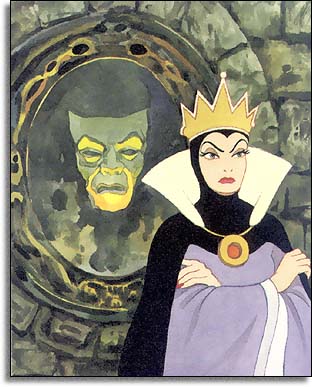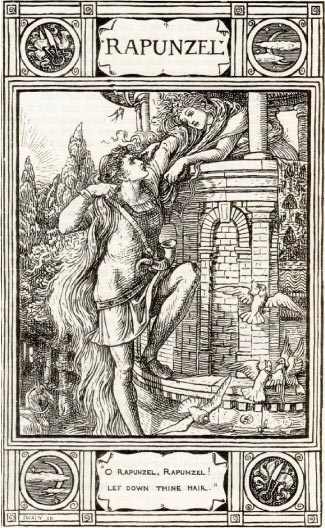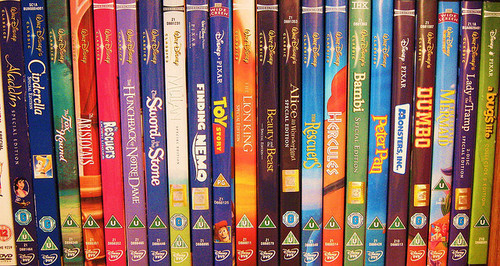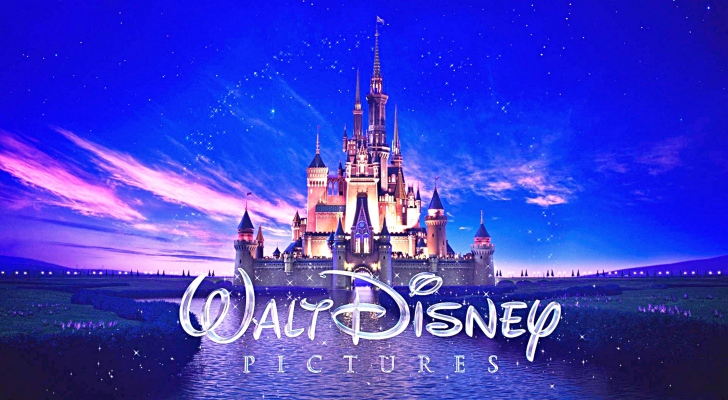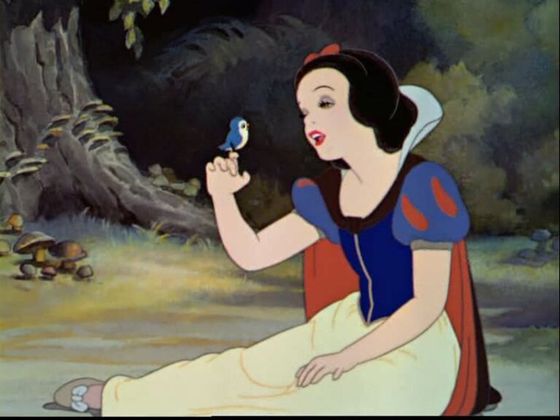And fortunately this new library has several interesting books I haven't read yet! Some of them were ones I was wanting to read anyway. Others are ones I wouldn't necessarily have bought for myself, but it's good to be exposed to other ways of thinking about fairy tales, even things I disagree with (often that which is controversial brings about the most interesting discussion anyway!).
Such is the case with The Witch Must Die: How Fairy Tales Shape Our Lives, by Sheldon Cashdan. (The link goes to the same book, I believe, but with the subtitle "The Hidden Meaning of Fairy Tales", which is interesting especially how it relates to my points below). Though I overall disagree with his thesis (and several of his supporting points...) that's not to say that he didn't have some really good points as well and interesting food for thought, so I'm certainly not discrediting everything he's written or anyone who happens to really like this book.
The two different subtitles
I find it very odd that this is the conclusion he reaches, because in his own preface he states that fairy tales were NOT originally meant for children, and were NOT originally meant to teach lessons. He also acknowledges that fairy tales, or similar stories, existed for hundreds of years before the "traditional" versions, and in many different forms.
Yet throughout the book, he sees fairy tales as primarily being tools in children's development, extracts what he says the "lessons" or morals are, and though he references some older versions, draws specific conclusions from the details of Grimm versions. In fact, he often references modern versions and stories that are not even fairy tales, such as Disney movies, the "Wizard of Oz" series, Maurice Sendak's "Where the Wild Things Are," even using Oscar Wilde's "Dorian Gray" and Star Wars. Usually when psychologists see fairy tales as having an overarching purpose and speaking in a similar way to all children, it's because they believe that fairy tales were handed down from generation to generation, being honed and developed by thousands of tellers and listeners into stories that are essential for human development-they were created by the collective humanity and that's why they continue to speak so deeply to humans. Yet specific versions are just one person's idea of a good story, and it's easier to disprove that a certain moral was their intent. In fact sometimes his examples make me wonder if his book should have tackled storytelling in general and not just fairy tales (he has a whole section on transitional objects such as stuffed animals, and mainly cites "Toy Story").
One of the issues with psychoanalytic views of fairy tales is that it puts all the blame and room for growth on the children in the stories, and the children who are listening, when it is clearly the adults who are the villains. This approach is similar. In fact, using the seven deadly sins to categorize all fairy tales seems downright creepy to me-maybe just because of the movie Se7en. Cashdan seems to see some things as "sin" that I would never categorize that way. He breaks it down:
Vanity-Snow White
Gluttony-Hansel and Gretel
Envy-Cinderella
Deceit-Rumpelstiltskin
Lust-Little Mermaid
Greed-Jack and the Beanstalk
Sloth-Pinocchio
Take Snow White and vanity. Cashdan details how both the stepmother/mother and Snow White struggle with the sin of vanity. In the witch's case it's pretty obvious; in Grimms' Snow White, the heroine is tempted first by laces and a comb, signs of vanity, before the infamous apple. Cashdan says that "vanquishing the queen represents a triumph of positive forces in the self over vain impulses." Yet Cashdan had just told us that Snow White suffers from the same temptations. In fact, time and time again she is found to have worth because of her beauty-from the huntsman ("she was so lovely the huntsman had pity on her") to the dwarves ("what beautiful child is this!") to that creepy prince ("I cannot live without looking upon Snow-white"). Snow White is never punished for wanting beautiful things-in my mind those episodes where the witch tempts Snow White shows more how tricky the witch is, or the pattern of threes in fairy tales, more than how Snow White is sinning. Plus, the object that actually knocks her out is an apple, not the laces or comb. It doesn't make sense that Snow White is sinful like the witch, and also that killing the witch is what conquers vanity while Snow White lives on happily. Many adults now muse on Snow White as a never ending cycle-Snow White is destined to become like her stepmother.
Cashdan maintains that children identify their own "sins" with those of the villains. "The encounter with the evil presence in the story forces children to come face to face with unwholesome tendencies in themselves by casting these tendencies as concrete characteristics of the witch. Confronting the witch becomes an act of self-recognition...If children hope to overcome bothersome thoughts and unwholesome inpulses, the witch must die." Really? Honestly, has any of you ever identified with the witch when reading a fairy tale? I'm positive I never did. Seeing the witch as one side of a mother's personality makes more sense to me, but not yourself.
Kay Nielsen
The chapter on gluttony really angered me. It reminded me of Carl-Heinz Mallet's similar psychological take on Hansel and Gretel, one which produces extreme amounts of condemnation on the children of a fairy tale who were abandoned by their own parents. Cashdan accuses both Hansel and Gretel of suffering from the same sin as the witch-gluttony. To which I would point out, they were LITERALLY starving to death, not the 21-st century American version of starving which means we haven't eaten in about 4 hours. He says, "one cannot fault the children for indulging themselves after wandering about for days with nothing to eat." Very true. But then, the fact that they take LARGE PORTIONS is just inexcusable-"the children know what they are doing is wrong, that it is sinful, but they cannot control themselves. What started off as 'nibbling' has turned into a feeding frenzy. Ordinary hunger has given way to gluttony."
All he quotes from Grimm, by the way, is that Hansel takes a great piece of the roof and Gretel a large window pane. Okay, eating a large portion once does NOT make you a glutton. ESPECIALLY IF YOU WERE LITERALLY STARVING TO DEATH. Gluttony is a habit of overeating. Gluttony wasn't even an option for Hansel and Gretel, or the majority of German peasants at the time, or really for most people at most periods of history. You ate what you farmed, and when there was a bad season, everyone went hungry. To eat your fill was a dream many people wished they could experience.
Yet once again, children supposedly identify themselves with the witch. "She is the children; she is the sinful or bad part of Hansel and Gretel, the part driven by gluttony. This is not lost on the children. At a deep intuitive level, they know the witch is a part of them, and that the voice that calls from within the house is their own." Really? That's quite a claim to make. Why even bother writing a book about it if it's so intuitive? (And is the meaning really hidden, as the subtitle claims?)
Walter Crane
Believe me, I work with kids and am the first to admit they're not perfect, but some psychologists seem way too overeager to condemn children in general, and victimized characters, for their evils. For example, Cashdan thinks Rapunzel and the prince deserve their harsh punishment for their sexual recklessness. Yet Cashdan gives the witch a pass. Forget the fact that she kidnapped someone else's child and gave her no chance at meeting friends or knowing her family-"she is not evil through and through. Her decision to keep Rapunzel in the tower flowed not from malice but from maternal concern." Sure she's a more complex witch than some, but how can he excuse her actions and condemn the ones of Rapunzel, when it should have been the witch's maternal responsibility to educate her?
If the "psychological mission" of fairy tales is indeed to "combat sinful tendencies in the self," would fairy tales really be as popular as they are? This approach is pretty preachy and normally doesn't make for very good storytelling. Cashdan even points out that sometimes sins, such as lying, can be rewarded in fairy tales (he mentions Frog Prince and Puss in Boots-there are many more that reward those who are intelligent enough to trick the villain). He explains that away by the fact that the ability to lie is an important step in child psychology. Again, this might make more sense if fairy tales were always told primarily for children, and by child psychologists, but that's not the case.
I have many more underlines and notes from the book but you get the idea of Cashdan's approach to fairy tales. Many of his arguments bring up good points for discussion even if his conclusions often seem out of place for the context, in my opinion. Do you have memories of reading fairy tales in childhood/interacting with children and these stories, in ways that would confirm or deny Cashdon's claims?



